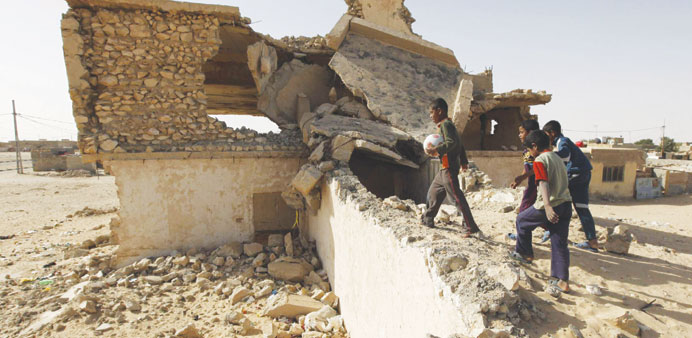|
Ten years ago this week, the so-called “shock and awe” bombing of Baghdad began, marking the start of a long conflict. I took my first trip to Iraq a couple of years later, as a 28-year-old field producer with CNN working with Anderson Cooper; but my real experience began in 2006 with a four-year assignment there. |
I’d covered the 9/11 attacks, the aftermath of Hurricane Katrina and the Hezbollah war. But the extremes in Iraq shocked people far more seasoned than I. The level of violence was astronomical and profoundly brutal.
At the height of the conflict mutilated bodies were literally piled in the streets every night, and getting shot at was a routine hazard of daily life.
By 2006 I was working in Baghdad with Michael Ware, who had recently arrived at CNN from Time magazine. In that pre-social media time, TV coverage had largely become a daily body count, reporting the most recent car bombings.
We wanted to focus on enterprise journalism, which was pretty difficult for TV news in Iraq. Ideally, we wanted to steal some of our print colleagues’ thunder. That’s where Ware came in.
We lived in the Red Zone, away from the comparative safety of the Green Zone, and the pressure was intense. One of the most difficult challenges was overcoming Iraq’s sectarian divisions. The animosity between Sunnis and Shias was such that we needed crews from both sides, so double of everything.
Equipment posed issues too. The typical big professional shoulder-mounted cameras of the time were not only unwieldy; they could also put you in danger. You didn’t want your camera to be mistaken for a weapon. Smaller DV cams were new and unsophisticated, but safer and more practical.
A feature of reporting from Iraq was the “embed”. These evolved enormously in my time there. Under General David Petraeus, the US military allowed journalists far more access than previously.
We never allowed ourselves to be dictated to by the military, or pushed our escorts in a particular direction to chase a story. Ethically, you simply had to be a fly on the wall.
The Iraq conflict pre-dated the smart phones that have transformed conflict reporting. In 2006 Baghdad’s cell network was barely functional, and while we had BGANs (portable satellite terminals) they were simply impractical. You couldn’t set up in the street without becoming a target, so we had to fall back to secure locations to get our pictures out.
Mobile phone footage would occasionally crop up, but from someone physically arriving at our bureau with a phone containing a week-old video.
The last five years have seen two pivotal moments with social media. The first came when people realised that they could tell the world what was going on by themselves.
The second came about 15 seconds later, when they realised they could manipulate this information.
Iraq was the last war before the social media revolution, and a simpler time. Back then it was about wire services and a network of trusted professionals; now a large part of a news network’s job involves verifying content, which can be a laborious process.
I witnessed some appalling things in my time in Iraq. As it did for many of my colleagues, it affected me more after I left than it did at the time, when you simply had to get on with the job.
Professionally and personally, I still follow events there closely. There is no question that the country is safer now, but while the world’s attention is on other conflicts, Iraq continues to simmer. This week it is important that we re-focus on it, because we cannot take its fragile peace for granted.
♦ Tommy Evans is senior director of coverage, CNN International

